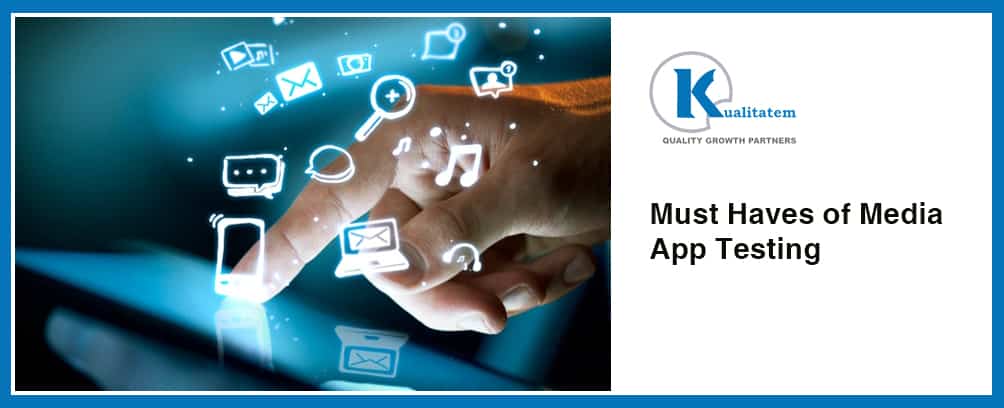Must Haves of Media App Testing

- February 9, 2015
- admin
The digital space now presents a huge opportunity to engage customers in multiple ways. Hence, media and entertainment agencies are constantly developing new ways to involve customers, build brand loyalty and multiply profits. With all this they are also struggling with shrinking budgets, demands for seamless application performance and shorter timeframes to market products.
So with all these pressures surrounding the business world how does a digital agency ensure that they are delivering the best value to their client? Here is how:
- Provide high quality user experience across multiple web and mobile platforms
- Support for varying user loads
- Create a consistent experience across web and mobile
- Know how to deal with real time connectivity issues
- Make time for testing security
Testing entertainment and media app requires the right mix of testing techniques and a well thought out strategy. The right mix of testing types will gauge how robust user-friendly your apps are. Remember that the best test strategy balances the tradeoffs between cost, quality, and time-to-market.
Have you designed your strategy yet?
Read through the media app testing must have’s and design your test strategy now!
Responsiveness/Adaptation
Whether your developers are going with responsive or adaptive web design, testing is a must. Both approaches are aimed at crafting sites to provide an optimal viewing experience, easy reading and navigation with a minimum of resizing, panning, and scrolling across a wide range of web and mobile platforms. It’s a must to see how your web or mobile app adapts to different browsers. So you need to test:
Alignment of text and images – proportionate display – Misplaced or overlapping content – Ad placement
Compatibility
Compatibility testing, part of software non-functional tests, is testing conducted on the web application to evaluate the application’s compatibility with multiple platforms. It ensures that the browsers are rendering the website as per the original design and functionality. Unlike responsiveness; compatibility testing checks for both design and functionality issues that may be caused due to browser incompatibility. The following table shows how an app compatibility matrix may look like:
| Platform | Browser |
| Windows 7 | Chrome, Firefox, Safari, IE (9,10,11) |
| MAC | Chrome, Firefox, Safari |
| iPhone 5 (iOS 6,7,8) | Safari, Chrome |
| iPhone 6 (iOS 8) | Safari, Chrome |
| Nexus 5 (Android 5.0) | Chrome, Default Browser |
Localization
Localization testing is performed to check whether the web application is supporting multiple languages for domestic market or not. The following list should be targeted as the scope to check on how well the application adapts to multiple consumer markets. You must test for: Content Translation – Date Conversion – Postal Codes – Phone Number Formats – Maps and Directions – Currency Conversion – Tax Rates
Usability
Usability testing is a technique used in user-centered interaction design to evaluate an application by testing it with live users. We test media apps across the following criteria:
Usefulness of site Content – Ease of Use – Desirable – Content Navigation – Accessibility for people with disabilities – Credibility of content
Functionality
Functionality across all platforms should be the same vary; web application should perform well in its intended manner. Common functional issues include sign up form validations, broken menu options, connection speed, interruptions on mobile platform and data handling.
Load Time
Page load time is they key which determines your consumer’s engagement with you app. The key factors to consider are mobile carriers and data usage, which can affect the speed and ease-of-use of the application. The application must be tested with different devices and carriers depending on the target markets.
So how do we know of poor page load time? If the page time does not match your SLA or as per web standards if the load time exceeds 5 seconds, that is a warning sign. There are online tools available which can help you determine page load time such as:
Security
The ever evolving range of mobile applications presents an entirely new set of security challenges. Mobile apps come with their unique security challenges. A few of them are as follows:
Confidentiality: Does your app keep your private data private?
Integrity: Can the data from your app be trusted and verified?
Authentication: Does your app verify you are who you say you are?
Authorization: Does your application properly limit user privileges?
Availability: Can an attacker take the app offline?
Non-Repudiation: Does your app keep records of events?
So next time you are looking to launch a 5 star app, don’t forget about these key testing types!











